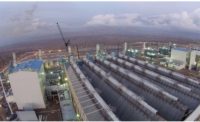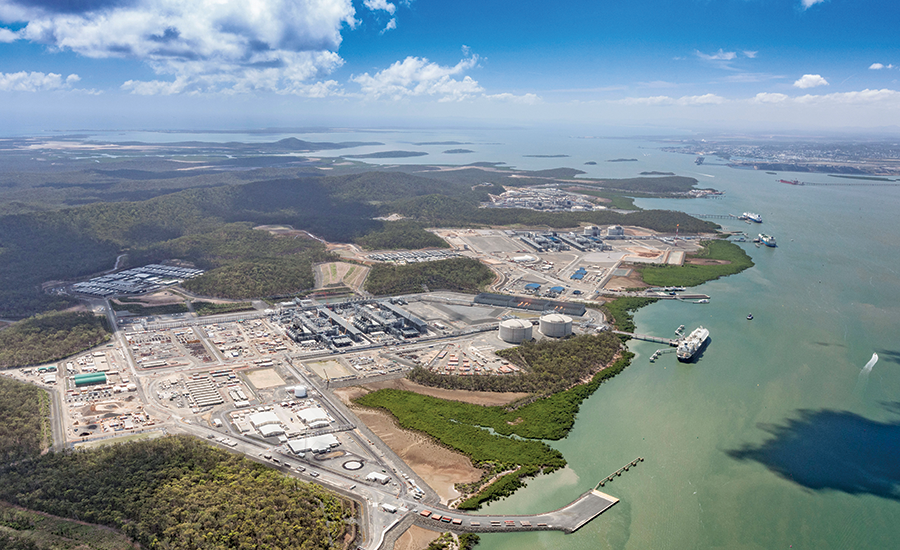Best Power/Industrial - Curtis Island LNG Program

PHOTO COURTESY BECHTEL

PHOTO COURTESY BECHTEL

PHOTO COURTESY BECHTEL

PHOTO COURTESY BECHTEL




Curtis Island LNG Program
Gladstone, Australia
Best Project
Owners Queensland Curtis LNG; Santos GLNG; Australia Pacific LNG
EPC Contractor and Lead Design Firm: Bechtel
Even for a contractor known for tackling complex megaprojects, the Curtis Island LNG program in Australia set a new standard for Bechtel Corp.
Working for three energy-company joint ventures under lump-sum contracts that the contractor says totalled $25 billion, it simultaneously managed design and construction of three side-by-side, two-train liquefied-natural-gas facilities that will account for 8% of world production. Kevin Berg, project general manager for Bechtel, told Bloomberg that the work represents the largest concentration of new projects in the company’s 117-year history. The three liquefaction plants, located on an island off the country’s northeastern coast, also are the world’s first to rely on gas extracted from coal seams as feedstock, says the Australian Financial Review.
The program relied on 24/7 global operation, with in-house engineering in Houston, New Delhi and Shanghai; materials and equipment sourced from the Americas, Europe, Asia and Australia; and 260 component modules produced in three Bechtel-managed Southeast Asia fabrication yards, says the contest narrative. Program management was in Houston, but the firm’s team in Brisbane, Australia, insured collaboration among project teams and owners in managing workforce, schedule and risk issues across the program.
The firm reports award of 37,000 purchase orders to some 600 suppliers. The heaviest and widest module produced and transported to the site was a 2,500-tonne propane chiller, measuring 44.5 meters long, 31 m wide and 29 m high. Six Curtis Island LNG tank roofs, each weighing 900 tonnes, were built on the ground inside the tank and lifted “on a cushion of air,” says an Australian mining publication.
Program execution also “pushed the envelope” in use of radio-frequency identification (RFID) to track materials’ shipments, an approach that earned the program two major industry recognitions, according to the Bechtel submission. It adds that first-time use of an insulation material has become “a new standard” on the firm’s global LNG construction projects.
The Curtis Island submission touts a strong safety culture, based on Bechtel’s “zero-accidents philosophy,” and use of design and construction approaches to meet strict environmental standards required by the LNG sites’ proximity to the fragile Great Barrier Reef and other protected areas.
Bechtel says its global workforce peaked at 30,000, with 14,500 on site. The huge demand for key workforce skills generated aggressive recruiting and training in Australia. In the wake of job cuts in the country’s hard-hit mining sector, this effort included a new apprenticeship program that trained and hired nearly 440 workers at all career stages “to upskill the region,” says one local media report.
The contractor says the apprenticeship program is the largest single intake of apprentices in Australia’s history and was recognized for innovation by the Queensland government. The submission also boasts $350 million in subcontracts to local businesses, a push to hire women and aboriginals, and support to local STEM education and marine safety programs.
Bechtel says construction of five of the LNG trains are complete, with production “above nameplate capacity.” The last is set to finish by year-end, company and owner executives have told media and stock analysts. A contractual penalty clause “is understood to kick in this year if construction is not complete,” the Sydney [Australia] Morning Herald reported in March. Bechtel also is building the estimated $29-billion Wheatstone LNG project in western Australia, which owner Woodside Petroleum Ltd. told Reuters last month would operate by mid-2017.
While media report the oil-price crash is clouding the plants’ future production and levels of economic return, Matthew Fox, executive vice president of project co-owner ConocoPhillips, termed the almost simultaneous project construction “astonishing,” says the Sydney newspaper. Global Best Project judges were impressed with the program’s success in managing its scale while ensuring a “sustainable legacy,” says one.







